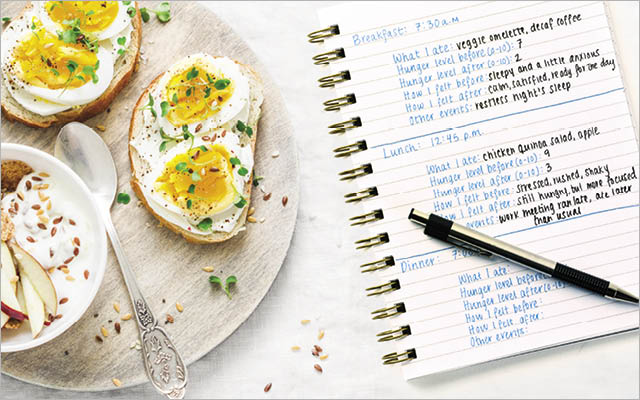Eating is essential to survival — and it is deeply symbolic. Virtually every culture has rituals around food: the fasting and feasting that surround holy days in Muslim, Catholic, and Jewish traditions; the solemnity of the tea ceremony in Japan; or the harvest festivals that occur everywhere from Kenya to Kentucky.
Yet ritual has gone missing from many modern meals. Breakfast is often a smoothie slurped in the car; lunch, a sandwich gobbled over the laptop. Another late meeting and family activities once again relegate dinner to an ad hoc affair — or maybe the drive-through.
Eating like this satisfies some basic needs: It fuels our bodies. Still, being fed isn’t the same as being nourished. For that, a few mealtime rituals can go a long way.
Nourishing Our Souls
When finding time for a meal is a challenge, the notion of adopting eating rituals can be especially daunting. “It’s hard to take foreign rituals and make them synthesize with our daily lives,” acknowledges Halé Sofia Schatz, coauthor of If the Buddha Came to Dinner: How to Nourish Your Body to Awaken Your Spirit.
Still, most food rituals are simpler than the Japanese tea ceremony. A ritual is just an emotionally significant practice one undertakes routinely, according to family therapist William Doherty, PhD, author of The Intentional Family: Simple Rituals to Strengthen Family Ties.
A mealtime ritual doesn’t need to be time-consuming, he says. Even the busiest person can bow her head for a moment before drinking her smoothie.
The benefits of doing so are many. For one, rituals heighten our enjoyment of food. Researchers at Harvard and the University of Minnesota discovered that people who engage in small rituals before eating find their food more flavorful. And the action itself seems largely unimportant: One test involved participants knocking on a table before eating baby carrots.
Mealtime practices also draw us into a state of increased awareness, explains Megrette Fletcher, cofounder and president of the Center for Mindful Eating in West Nottingham, N.H. “Rituals can be a way to focus our intention,” she says. They bring us into the present moment.
Bringing Meaning to Mealtime
Adopting simple rituals is a wonderful way to reconnect to food. But if your practices become rigid, they can backfire: The point of any ritual is to relax and connect. These suggestions can help make your mealtimes more meaningful, even when the dining table looks a lot like your desk.
Create a ritual dining space.
You don’t need a formal dining room to have a pleasant mealtime experience. It’s more important to make an intentional transition between one activity and another.
- Clear newspapers, bills, and homework from any eating surface.
- Set the table. Light candles. Dim the lights. If you like background music, turn some on. If you’re feeling fancy, bring out the linens.
- Close the door to the kitchen or turn off the lights over the stove. This puts your attention on the meal, not the cleanup that awaits.
- Put away phones and turn off the television. Treat eating as an occasion worthy of undivided attention.
Tend to detail.
Even the most casual eating experience benefits from a conscious beginning, middle, and end.
- Little pre-meal gestures help move us beyond automatic eating. A breath, a pause, a nod of gratitude is all it takes.
- When saying grace or raising a toast, take time to acknowledge the pleasure and privilege of eating. Schatz says that this simple act offers the opportunity to reconnect to yourself and your loved ones.
- Slow down. Give yourself enough time to truly enjoy your meal and notice what is going on around you.
- Practice good manners. Chewing with mouths closed and saying please and thank-you show respect for your dining companions — and yourself.
Share the meal.
Doherty’s research suggests that eating in the company of others is important. Regularly breaking bread with friends provides many of the same benefits as eating with family.
- Schedule family meals several times per week. Be mindful of work schedules and activities that present obstacles to dining together.
- Invite people to the table rather than hollering at them when dinner is ready. Try ringing a bell five minutes before the meal is served.
- If you live alone, invite friends over. Find a small group that likes eating together and rotate hosting duties.
- Present meals family-style rather than plating up individual servings. As people pass food to each other, they connect more.
- Avoid unnecessary conflicts or criticism at the table. Heated discussions trigger the sympathetic nervous system, which shuts down digestion. (For more tips on how to calm your mind and boost digestion, see “13 Ways to Calm Your Mind and Boost Digestion”.)
Practice mindfulness.
Be conscious of your eating habits. Numerous studies demonstrate that this can ease physical and emotional struggles with food. “Mindfulness helps you remember that you’re nourishing yourself with more than food,” says Fletcher.
- Pause before eating and notice your mental state. Ask yourself what you want and need from this meal, both nutritionally and emotionally.
- Observe your body: how you sit, how you bring food to your mouth, how you chew. Are you comfortable? Are you breathing?
- Rest your fork and relax between bites.
- Notice when you are full and whether that fullness comes with a sense of satisfaction. “Distracted eating may make you feel too full, but oddly not satisfied,” notes Fletcher. Ask yourself if you might be longing for something other than food.
- If your lunch break is your only opportunity to catch up on email, and you must have your phone or laptop at hand, be creative: Take one conscious bite of food before attending, thoughtfully, to each message.
Prepare the feast.
Busy schedules often preclude elaborate meal preparation. Yet even making a pot of soup over the weekend or chopping veggies for quick stir-fries offers an opportunity to connect more deeply with food. Here are a few ways to increase the pleasure in prepping:
- Plant a window herb garden and harvest what you need before each meal.
- Clean off the counters — even a 3-foot stretch, if that’s all you can do for now.
- Turn on music and pour a glass of wine or sparkling water before you start cooking.
- When possible, involve the family. “The more participation in a ritual, the better it works for people,” notes Doherty, who cautions against dinner becoming “a food-consumption event put on by the parents.”




This Post Has 0 Comments